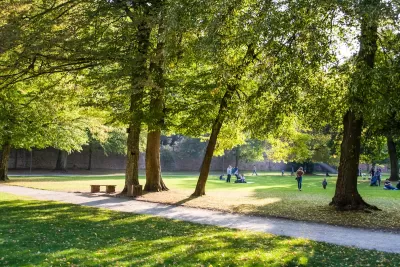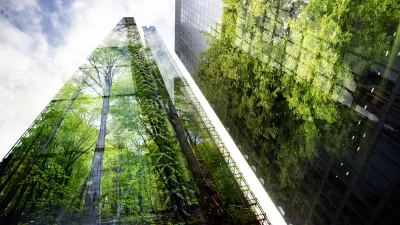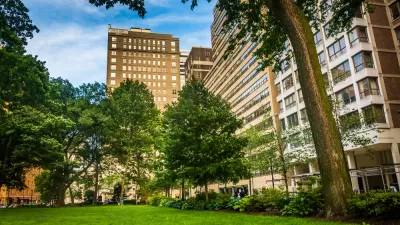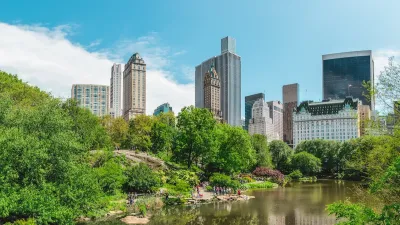The Urban Land Institute offers fact sheets describing five innovative ways that parks can reduce carbon emissions and mitigate climate threats while advancing health, equity, and quality of life in urban areas.

Parks play a crucial role in advancing sustainability by providing green spaces that perform a variety of important functions, such as mitigating the urban heat island effect, promoting biodiversity, and acting as natural air filters to improve air quality. Parks also contribute to communities' ability to withstand and recover from challenges such as extreme weather events and climate change. They offer natural flood management by absorbing excess rainwater, reducing the risk of floods. This capability is enhanced by incorporating features like rain gardens and permeable pavements. In addition, parks provide spaces for community gathering and recreation, promoting physical and mental well-being.
The Urban Land Institute (ULI) recently published the following five fact sheets which explain how parks and green spaces can reduce carbon emissions and mitigate climate threats, while advancing health, equity, and quality of life in urban areas:
- Promoting Green Infrastructure
- Supporting Ecosystem Restoration
- Mitigating Urban Heat
- Leveraging Parks as Carbon Sinks
- Investing in Solar Energy
For more information, please visit this link.
FULL STORY: How Parks Advance Sustainability and Resilience

Study: Maui’s Plan to Convert Vacation Rentals to Long-Term Housing Could Cause Nearly $1 Billion Economic Loss
The plan would reduce visitor accommodation by 25,% resulting in 1,900 jobs lost.

North Texas Transit Leaders Tout Benefits of TOD for Growing Region
At a summit focused on transit-oriented development, policymakers discussed how North Texas’ expanded light rail system can serve as a tool for economic growth.

Why Should We Subsidize Public Transportation?
Many public transit agencies face financial stress due to rising costs, declining fare revenue, and declining subsidies. Transit advocates must provide a strong business case for increasing public transit funding.

How to Make US Trains Faster
Changes to boarding platforms and a switch to electric trains could improve U.S. passenger rail service without the added cost of high-speed rail.

Columbia’s Revitalized ‘Loop’ Is a Hub for Local Entrepreneurs
A focus on small businesses is helping a commercial corridor in Columbia, Missouri thrive.

Invasive Insect Threatens Minnesota’s Ash Forests
The Emerald Ash Borer is a rapidly spreading invasive pest threatening Minnesota’s ash trees, and homeowners are encouraged to plant diverse replacement species, avoid moving ash firewood, and monitor for signs of infestation.
Urban Design for Planners 1: Software Tools
This six-course series explores essential urban design concepts using open source software and equips planners with the tools they need to participate fully in the urban design process.
Planning for Universal Design
Learn the tools for implementing Universal Design in planning regulations.
Ascent Environmental
Borough of Carlisle
Institute for Housing and Urban Development Studies (IHS)
City of Grandview
Harvard GSD Executive Education
Toledo-Lucas County Plan Commissions
Salt Lake City
NYU Wagner Graduate School of Public Service





























